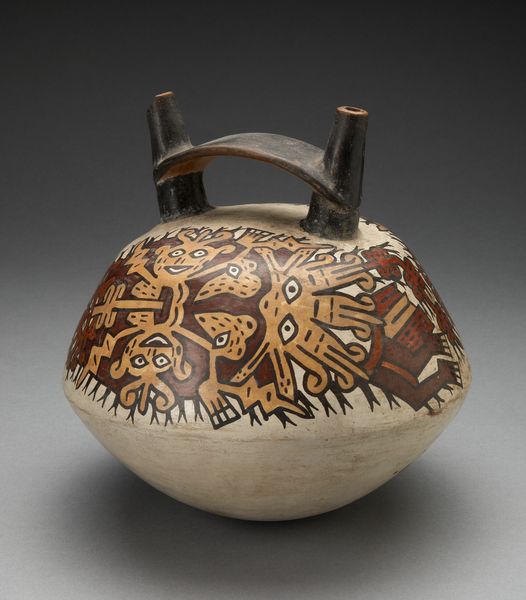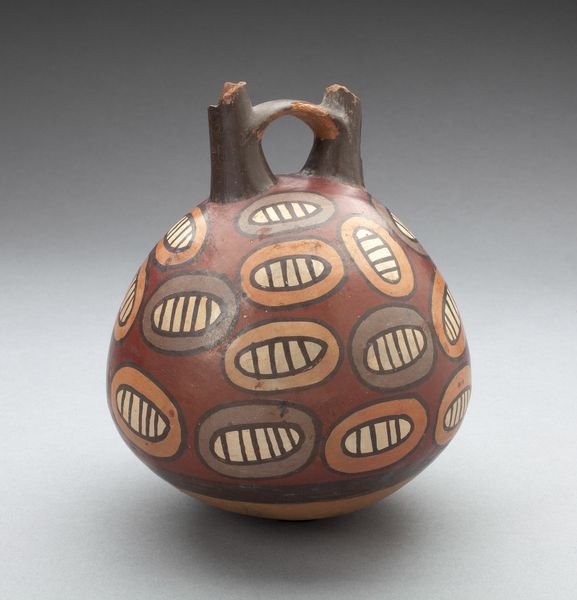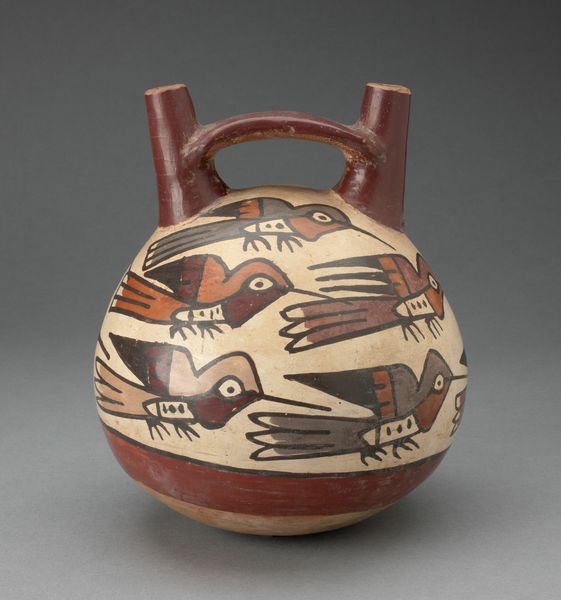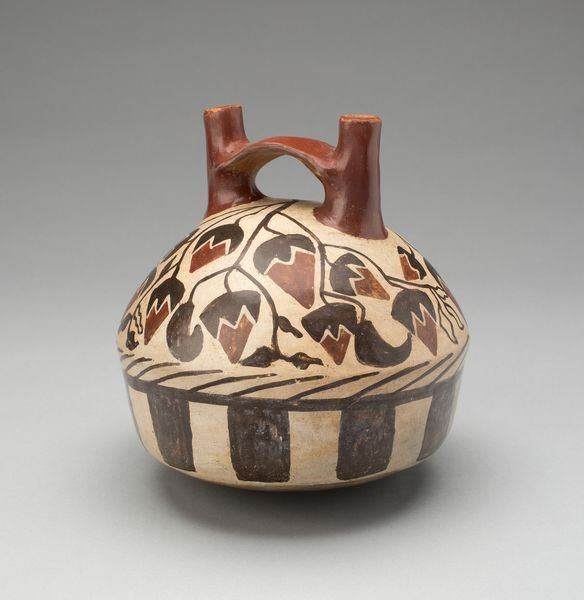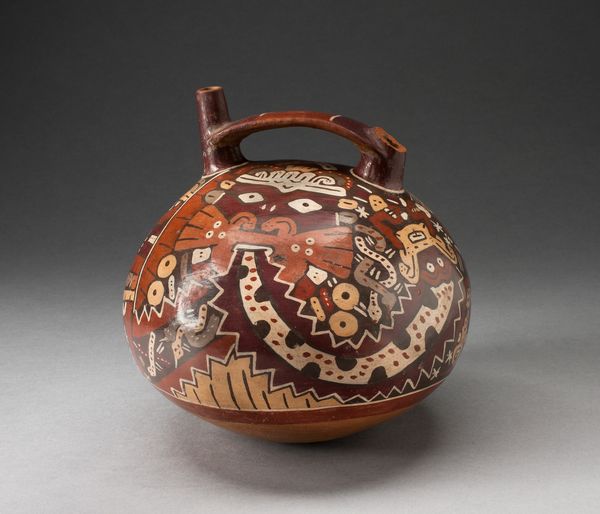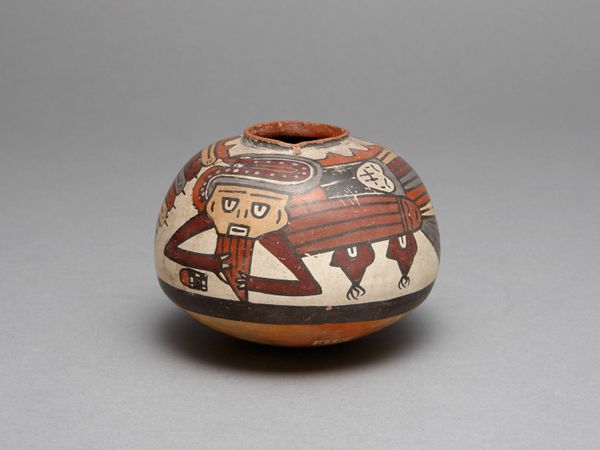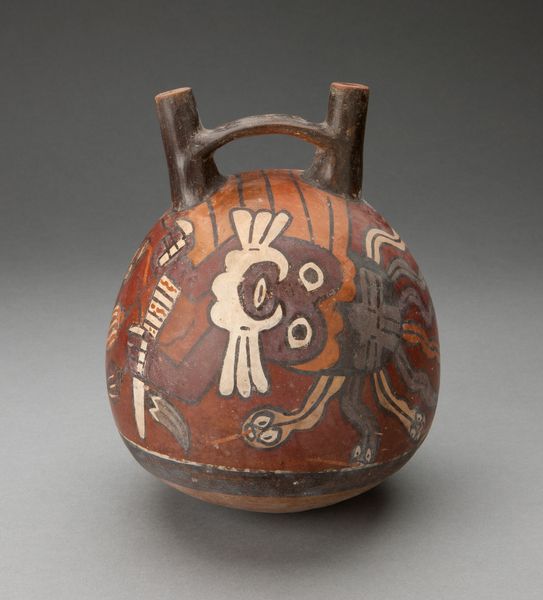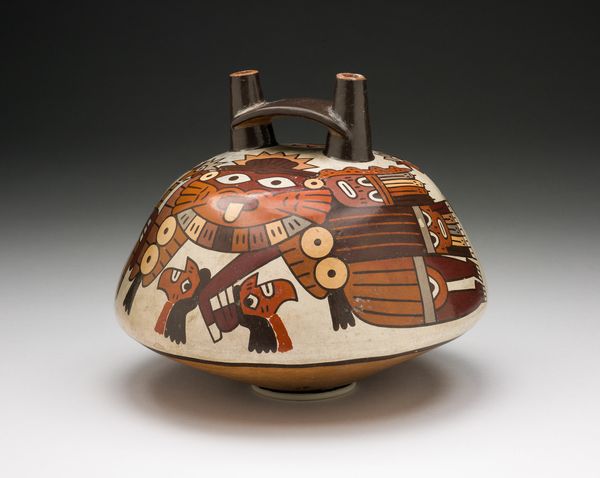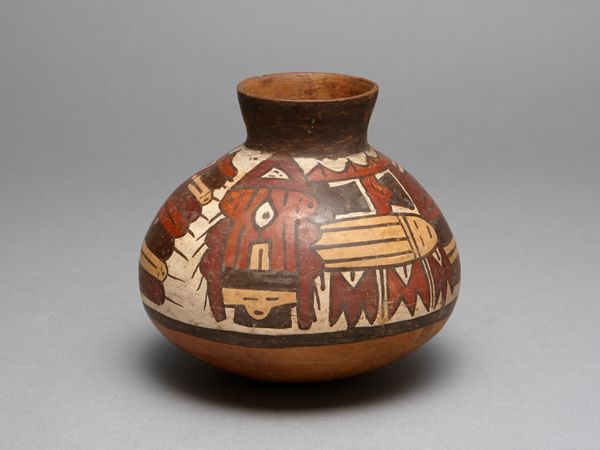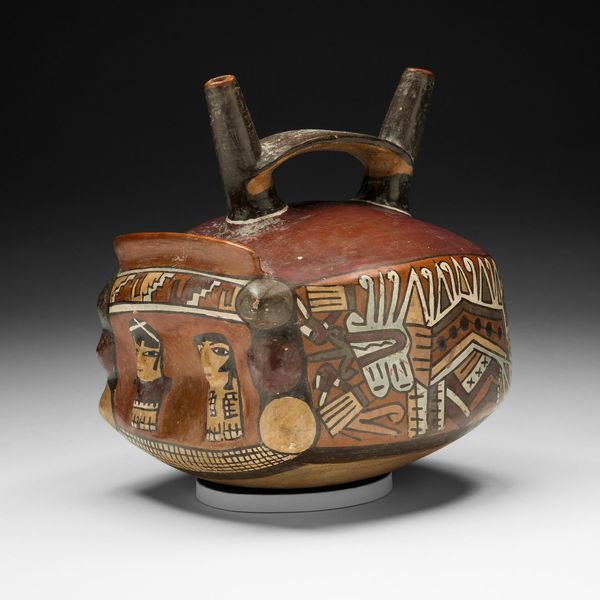
Bridge Vessel Depicting Abstract Motifs, Likely Beans or Seeds c. 180 - 500
0:00
0:00
ceramic
#
ceramic
#
indigenous-americas
Dimensions: 19.5 × 15.9 cm (7 11/16 × 6 1/4 in.)
Copyright: Public Domain
Curator: Welcome. We are looking at a ceramic vessel dating from approximately 180 to 500 AD. It's titled "Bridge Vessel Depicting Abstract Motifs, Likely Beans or Seeds," crafted by an artist of the Nazca culture and is now held at The Art Institute of Chicago. Editor: Immediately striking. The beige and earth-toned palette feels grounded, almost deliberately muted, but the high-gloss finish makes it a strangely seductive piece. It's a powerful contrast. Curator: Indeed. The vessel’s form—the bulbous body, the bridge handle—serves a purpose. Function meeting symbolic representation, no? These "beans or seeds" aren't mere decoration. Their patterned repetitions over the surface evoke a vital cycle—harvest, perhaps, or growth? Editor: That geometric base contrasts the main design elements of beans or seeds. Consider, too, the object's potential relationship to labor. We might speculate this vessel held liquid used in the process of Indigenous enslavement through coercive mita labor regimes within haciendas—such as grape alcohol or corn beer, as recompense or enticement for forced labour. How does it rewrite these meanings if read with historical awareness? Curator: A crucial point. We see a visual rhythm in these patterns, how some lean one direction and other elements point elsewhere. A formal examination pushes beyond literal interpretation to a purely relational experience. The vessel prompts awareness of positive and negative space, movement, symmetry. Editor: Yes, but ignoring the historical context strips away meaning. Think of colonial violence enacted upon Indigenous communities that existed even prior to contact by European cultures—the subjugation enacted and labor required by Indigenous workers growing such seeds or plants for external powers, that's also inscribed into the history. The colors could evoke specific natural resources as well as loss and pain connected to natural and exploited resources. Curator: An important corrective—always more than meets the eye. The visual pleasure is enhanced and destabilized by your historical perspectives. Editor: Agreed. Both our interpretations are strengthened through that interplay. Curator: Perhaps the point being that visual forms cannot be divorced from culture itself.
Comments
No comments
Be the first to comment and join the conversation on the ultimate creative platform.
